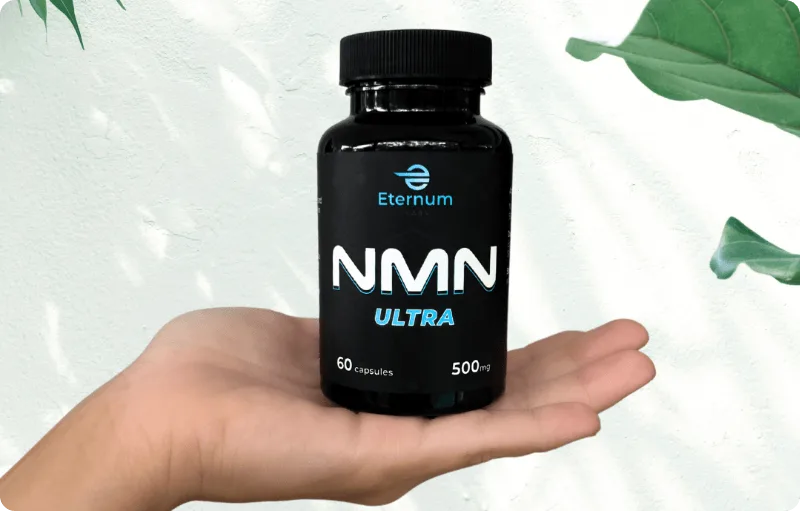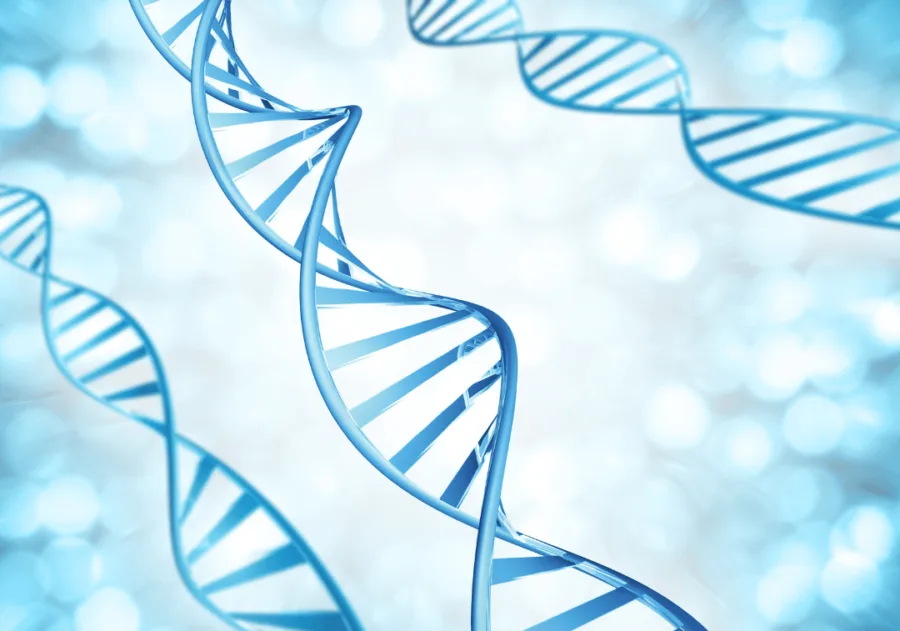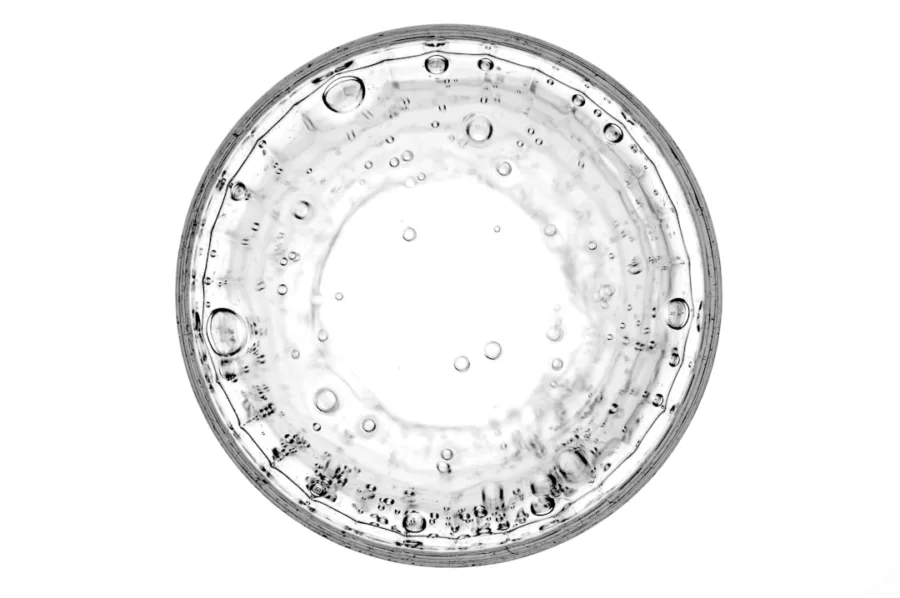How To Boost NAD+: The Synergistic Effects of NMN and NR
Table of Contents
- Understanding the Importance of Increasing NAD+ Levels
- Unveiling the Health Benefits of Boosting NAD+
- Decoding NMN and NR: The Key Molecules for NAD+ Production
- Unraveling the Role of NMN in NAD+ Boost
- Exploring the Role of NR in NAD+ Boost
- The Synergistic Effects of NMN and NR on NAD+ Levels
- Increasing NAD+ Levels Naturally: A Pathway to Enhanced Health and Longevity
Understanding the Importance of Increasing NAD+ Levels
Discover the science behind boosting NAD+ levels, the benefits it brings, and the role of key molecules NMN and NR in this process. Let’s delve into the fascinating world of cellular health and longevity.
Why is NAD+ Important for the Body?
Nicotinamide adenine dinucleotide (NAD+) is a coenzyme found in every cell of our body and plays a crucial role in energy metabolism. It helps convert the food we eat into energy our cells can use. Moreover, NAD+ is vital for the function of sirtuins, proteins that regulate cellular health and have a significant impact on aging.
Does Boosting NAD+ Improve Health?
Research suggests that boosting NAD+ levels can have numerous health benefits. It can enhance cellular energy, improve mitochondrial function, and promote healthy aging. By understanding how to boost NAD+ naturally, we can potentially unlock a pathway to improved health and longevity.
Unveiling the Health Benefits of Boosting NAD+
Boosting NAD+ levels in the body has been linked to a range of health benefits. From enhancing cellular energy to promoting healthy aging, increasing NAD+ levels naturally can potentially unlock a pathway to improved health and longevity. But what exactly are these benefits? Let’s explore in detail.
What are the Benefits of Boosting NAD+?
Boosting NAD+ levels can have a profound impact on our health. Here are some of the key benefits:
- Enhanced cellular energy: NAD+ plays a crucial role in energy metabolism, helping to convert the food we eat into energy our cells can use.
- Improved mitochondrial function: NAD+ is vital for the function of sirtuins, proteins that regulate cellular health and impact aging.
- Promotion of healthy aging: Boosting NAD+ levels can support healthy aging by enhancing cellular repair and combating oxidative stress.
How Does NMN and NR Boost NAD+?
Nicotinamide Mononucleotide (NMN) and Nicotinamide Riboside (NR) are two key molecules that play a significant role in NAD+ production. NMN is converted into NAD+ in our cells, while NR is a precursor to NAD+ that can be found in milk. Both NMN and NR are used by our bodies to produce more NAD+, thereby boosting its levels and contributing to the many health benefits associated with increased NAD+. Learn more about the role of NAD+ in cellular energy and longevity here.
Decoding NMN and NR: The Key Molecules for NAD+ Production
Boosting NAD+ levels naturally is a topic of interest for many health-conscious individuals. Two key molecules that play a significant role in this process are Nicotinamide Mononucleotide (NMN) and Nicotinamide Riboside (NR). Understanding how these molecules work can provide insights into how to enhance NAD+ production in the body.
What is the Role of NMN in Increasing NAD+?
Nicotinamide Mononucleotide (NMN) is a molecule that plays a vital role in NAD+ production. It is converted into NAD+ in our cells, thereby boosting its levels. The increased NAD+ levels can contribute to enhanced cellular energy, improved mitochondrial function, and promotion of healthy aging. Understanding the role of NMN in boosting NAD+ levels can provide insights into how to increase NAD+ levels naturally.
What is the Role of NR in Boosting NAD+ Levels?
Nicotinamide Riboside (NR) is another key molecule that contributes to NAD+ production. It is a precursor to NAD+ that can be found in milk. Our bodies use NR to produce more NAD+, thereby boosting its levels. The increased NAD+ levels can lead to numerous health benefits, including enhanced cellular energy, improved mitochondrial function, and promotion of healthy aging. Understanding the role of NR in boosting NAD+ levels can provide insights into how to naturally increase NAD+ with NMN and NR.
Comparison of NMN and NR in NAD+ Production
| Factor | Nicotinamide Mononucleotide (NMN) | Nicotinamide Riboside (NR) |
|---|---|---|
| Direct NAD+ Conversion | NMN is one step away from NAD+ and is directly converted via the NMNAT enzyme. | NR must first convert into NMN before becoming NAD+, adding an extra conversion step. |
| Bioavailability & Absorption | Previously thought to require conversion to NR for absorption, but newer research suggests NMN can enter cells directly via the Slc12a8 transporter. | NR is absorbed efficiently in cells but must convert into NMN first before contributing to NAD+ levels. |
| Speed of NAD+ Increase | Potentially faster due to direct conversion into NAD+. | Slightly slower as it requires an additional enzymatic step. |
| Stability | More stable in the body, making it a preferred option in supplement form. | Less stable in the bloodstream, may degrade into nicotinamide (NAM) before reaching target cells. |
| Scientific Research & Studies | More studies on longevity, energy metabolism, and cardiovascular health; growing evidence of direct NAD+ conversion. | More early-stage research, often focused on neuroprotection and mitochondrial function. |
| Common Dietary Sources | Found in edamame, broccoli, cucumbers, and avocados. | Found in trace amounts in milk and yeast-based foods. |
| Usage in Supplements | Used in high-potency longevity and NAD+ boosting supplements. | Still used in NAD+ boosters but less common compared to NMN. |
Both NMN and NR play crucial roles in NAD+ production, contributing to the many health benefits associated with increased NAD+ levels. Understanding the synergistic effects of NMN and NR on NAD+ can help individuals looking for ways to boost NAD+ levels naturally.
Unraveling the Role of NMN in NAD+ Boost
As we delve deeper into the world of cellular health and longevity, it’s important to understand the role of key molecules like Nicotinamide Mononucleotide (NMN) in the process of boosting NAD+. NMN, a precursor to NAD+, plays a significant role in increasing the levels of this crucial coenzyme in our bodies, thereby contributing to various health benefits. Let’s explore how NMN works to boost NAD+ levels and its impact on our health.
How Does NMN Increase NAD+ Levels?
NMN is a key player in the production of NAD+ in our bodies. It acts as a direct precursor to NAD+, meaning it undergoes a series of transformations in our cells to become NAD+. This process is facilitated by an enzyme known as NMNAT, which converts NMN into NAD+. By supplying our bodies with NMN, we can effectively boost the production of NAD+ and reap the associated health benefits.
The Impact of NMN on Cellular Health
By boosting NAD+ levels, NMN plays a pivotal role in maintaining and enhancing our cellular health. NAD+ is a crucial coenzyme that supports various biological processes, including energy metabolism, DNA repair, and cellular aging. By increasing NAD+ levels, NMN helps enhance cellular energy, improve mitochondrial function, and promote healthy aging. In fact, research suggests that NMN supplementation can help combat age-related decline in energy metabolism and other aspects of health.
How to Naturally Increase NAD+ with NMN
While our bodies naturally produce NMN, the levels can decline with age. Fortunately, we can boost our NMN levels through dietary sources and supplements. Foods like edamame, broccoli, cucumbers, and avocados are rich in NMN. Additionally, NMN supplements, like our NMN Ultra 500mg, can provide a concentrated dose of NMN to effectively boost NAD+ levels.
Best Overall: NMN Ultra 500mg
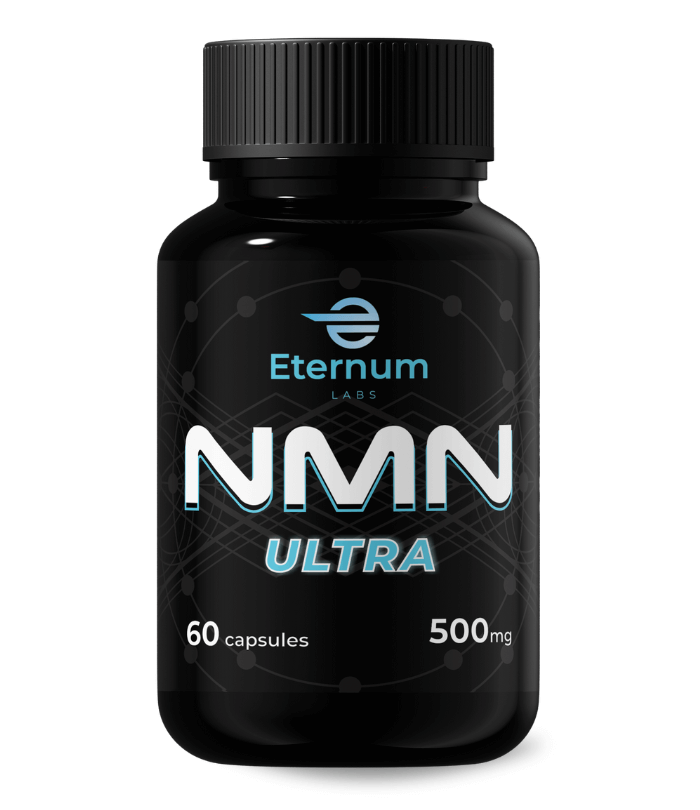
Contains 500mg of pure NMN (Nicotinamide Mononucleotide) for energy metabolism and cellular health.
Price: $79.97
Exploring the Role of NR in NAD+ Boost
In our quest to understand how to boost NAD+, we now turn our focus to Nicotinamide Riboside (NR), another key player in the NAD+ production process. Like NMN, NR is a precursor to NAD+, and its role in boosting NAD+ levels is equally significant. Let’s delve into the mechanisms of NR in NAD+ production and its impact on our health.
How Does NR Increase NAD+ Levels?
Nicotinamide Riboside (NR) contributes to NAD+ production by serving as a precursor. It is found naturally in milk and is absorbed efficiently by our cells. However, before it can contribute to NAD+ levels, NR must first convert into NMN. This additional step makes the process slightly slower compared to NMN, but the end result is the same: increased NAD+ levels and the associated health benefits.
The Impact of NR on Cellular Health
By boosting NAD+ levels, NR plays a crucial role in supporting cellular health. NAD+ is essential for various biological processes, including energy metabolism, DNA repair, and cellular aging. Increased NAD+ levels, facilitated by NR, can lead to enhanced cellular energy, improved mitochondrial function, and promotion of healthy aging. Early-stage research has also shown promising results for NR’s role in neuroprotection and mitochondrial function.
How to Naturally Increase NAD+ with NR
Boosting NAD+ levels naturally with NR can be achieved through dietary sources and supplements. While NR is found in trace amounts in milk and yeast-based foods, supplements like our NAD+ Ultra provide a concentrated dose of NR, along with other NAD+ precursors, to effectively boost NAD+ levels.
Best Overall: NAD+ Ultra
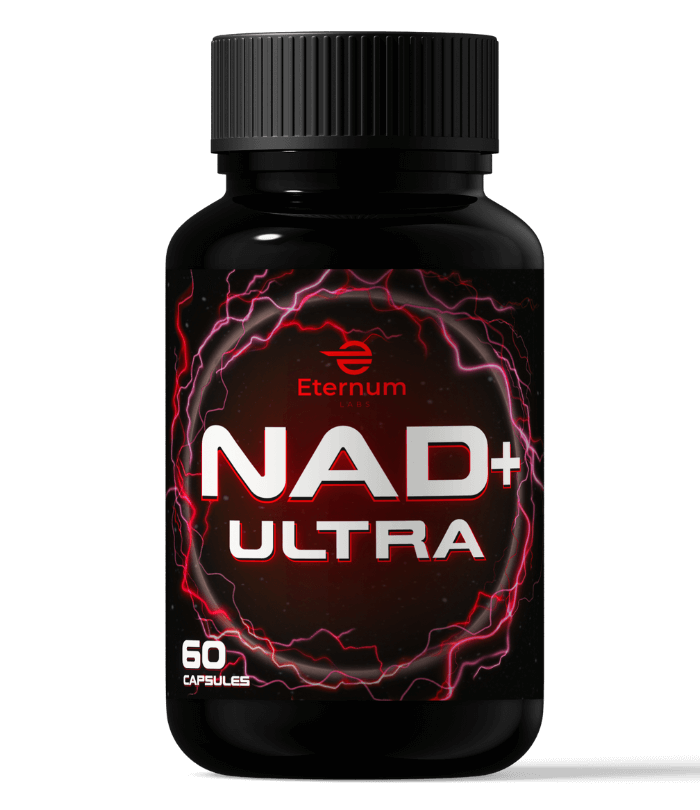
10-in-1 anti-ageing, NAD+ boosting blend with additional benefits for energy metabolism and cellular health.
Price: $97.90
The Synergistic Effects of NMN and NR on NAD+ Levels
As we continue our exploration into how to boost NAD+, it’s essential to understand the synergistic effects of Nicotinamide Mononucleotide (NMN) and Nicotinamide Riboside (NR). These two molecules play a significant role in NAD+ production, and their combined effects can lead to a substantial increase in NAD+ levels, thereby contributing to improved cellular health and longevity. Let’s delve into the fascinating synergy of NMN and NR.
Understanding the Synergistic Effects of NMN and NR on NAD+
NMN and NR, both precursors to NAD+, work in synergy to boost NAD+ levels in the body. While NMN is directly converted into NAD+ in our cells, NR must first convert into NMN before it can contribute to NAD+ levels. This process, although slightly slower, leads to the same end result: increased NAD+ levels and the associated health benefits. Understanding the synergistic effects of NMN and NR can provide insights into effective strategies for boosting NAD+ levels naturally.
How Do NMN and NR Work Together to Boost NAD+?
Here’s a step-by-step breakdown of how NMN and NR work together to boost NAD+ levels:
- Step 1: Ingestion & Absorption
- NMN and NR are consumed through dietary sources or supplements.
- NR is absorbed in the intestines and enters the bloodstream efficiently.
- NMN, previously thought to require conversion to NR, has now been shown to be directly absorbed via the Slc12a8 transporter.
- Step 2: NR Conversion into NMN
- Inside cells, NR is converted into NMN by the enzyme NRK (Nicotinamide Riboside Kinase).
- This conversion is a required step before NR can contribute to NAD+ synthesis.
- Step 3: NMN Conversion into NAD+
- NMN is directly converted into NAD+ via the NMNAT (Nicotinamide Mononucleotide Adenylyltransferase) enzyme.
- Since NMN is already one step away from NAD+, this conversion happens more efficiently than NR.
- Step 4: Cellular Utilization of NAD+
- The newly synthesized NAD+ fuels essential processes, including:
- Mitochondrial energy production (ATP synthesis)
- DNA repair and cellular maintenance via sirtuins
- Neuroprotection and cognitive support
- Step 5: Recycling via the NAD+ Salvage Pathway
- NAD+ is continuously broken down and recycled.
- Excess NAD+ is converted into nicotinamide (NAM), which can be recycled back into NMN and NAD+ through the NAD+ salvage pathway, ensuring sustained cellular function.
This process illustrates the synergistic effects of NMN and NR on NAD+ production. By supplying our bodies with both these molecules, we can effectively increase NAD+ levels and reap the associated health benefits.
The Combined Impact of NMN and NR on Cellular Health
The combined impact of NMN and NR on cellular health is substantial. By boosting NAD+ levels, these molecules contribute to enhanced cellular energy, improved mitochondrial function, and promotion of healthy aging. They support various biological processes, including energy metabolism, DNA repair, and cellular aging. The synergistic effects of NMN and NR on NAD+ production, therefore, offer a potent strategy for enhancing cellular health and promoting longevity.
Increasing NAD+ Levels Naturally: A Pathway to Enhanced Health and Longevity
As we have explored, boosting NAD+ levels can have profound effects on our health, from improving cellular energy to promoting healthy aging. The key to unlocking these benefits lies in understanding how to boost NAD+ levels naturally. In this final section, we will explore various ways to increase NAD+ levels, the foods that can help boost NAD+, and the intriguing link between NAD+ levels and longevity.
Ways to Increase NAD+ Levels Naturally
Boosting NAD+ levels naturally involves a combination of dietary choices, lifestyle changes, and supplementation. Incorporating foods rich in NAD+ precursors like NMN and NR, such as edamame, broccoli, cucumbers, avocados, milk, and yeast-based foods, can contribute to increased NAD+ production. Regular exercise and intermittent fasting have also been shown to boost NAD+ levels. Lastly, supplements like NMN Ultra and NAD+ Ultra can provide a concentrated dose of NAD+ precursors to effectively boost NAD+ levels.
What Foods Help Boost NAD+ Levels?
Several foods are rich in NAD+ precursors like NMN and NR, which can help boost NAD+ levels. These include edamame, broccoli, cucumbers, avocados, milk, and yeast-based foods. Incorporating these foods into your diet can be an effective way to increase NAD+ levels naturally. However, it’s important to note that dietary sources alone may not provide sufficient amounts of NAD+ precursors, making supplementation a valuable addition to a NAD+-boosting regimen.
The Link Between NAD+ Levels and Longevity
Research has established a fascinating link between NAD+ levels and longevity. NAD+ is essential for the function of sirtuins, proteins that regulate cellular health and impact aging. By boosting NAD+ levels, we can enhance sirtuin activity, thereby promoting healthy aging and potentially extending lifespan. A study published in Cell Metabolism found that NAD+ levels decline with age, and boosting NAD+ levels can counteract many age-related physiological declines. This underscores the potential of NAD+ boosting strategies, like NMN and NR supplementation, as a pathway to enhanced health and longevity.
In conclusion, understanding how to boost NAD+ levels naturally can unlock a pathway to improved health and longevity. By incorporating NAD+-boosting foods into our diet, making lifestyle changes, and considering supplementation, we can effectively increase NAD+ levels and reap the associated health benefits. Remember, it’s always important to consult with a healthcare provider before starting any new supplementation regimen.

